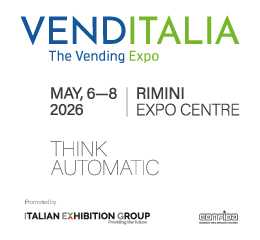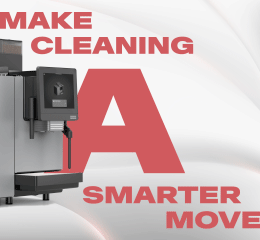Share your coffee stories with us by writing to info@comunicaffe.com.
MILAN – Marcello Geraci, a coffee roaster appreciated across the Channel, Q-grader, barista, has developed his passion and knowledge for the drink over time and above all in the field. Like many others, he started out with a connection to moka coffee, lovingly served by his grandmother with lots of sugar, and slowly over the years he has refined his hypersensitive palate in tasting speciality coffees. Having arrived in London after gaining experience in various parts of England, his story is in constant evolution. Although at the moment he seems to have stopped at a very hospitable home, Mauro Laruffa’s Specialty Cafètiere. He spoke to us about all this in the following interview, another piece in the picture of the many Italians in this sector who have sought their space outside national borders.
So, Marcello Geraci, who are you and how did you get into coffee?
“When I arrived in England, my connection with coffee was one born with my grandmother. I was first near London and I didn’t even know the language well. I was fascinated by Starbucks, and because of previous contacts, I managed to get hired as a barista in one of their shops, later becoming a supervisor, store manager and district coffee master: for a year, I went around the various cities to enforce quality standards in the other coffee shops.
In the meantime, I started to get interested in latte art, watching our Italian champions. I then took part in a latte art competition in a specialty coffee shop, and that’s when I fell in love with the Third Wave. I became head barista at the C.U.P. Coffee Under Pressure Cup Coffeeshop, working with the Greek owners who inspired me. It was then that I decided to stay in this industry also because of the kind of relationships I was able to make during the competitions, at a time when I suffered a lot from loneliness: at six in the morning, making coffee there made me feel at home.
My passion for the drink drove me to look elsewhere, to Oxford, to also work as an assistant roaster in a well-known coffeeshop, with La Marzocco Strada, and two Mythos2 & Mahlkonig EK45 grinders. It was here that I was introduced to roasting and developing the basic skills of the process. Mostly then I learned as a self-taught by observing great examples like Scott Rao, except for the support of my friend Aron.
I continued this way, following different pop up activities…until Covid came along. Just before it all came to a halt, I jumped at the chance to work at a wood roasting plant near Oxford that was losing ground to the growing specialty roastery. We went through a period of total closure. They had a 30kg Giesen but they couldn’t get the value out of it – they lacked the know-how to use it properly.
I thought I would put my theory into practice, even though I wasn’t really a roaster, I had completed all the other Sca modules. I got my Spanish friend Aron involved in the development of specialty roasting, working with some great green crudists doing direct trading and tracking.
After the lockdown, the company was completely revitalised at its peak. We were among the first to get our hands on Colombia experimental Cinnamon fermented green coffee, presented as a microlot.
To grow as a professional I chose to go to London
To work for one of the medium-sized companies, Saint Espresso as head roaster. Here I met Nicolas Pastellopolus, world sensory judge. He opened up a new world to me and we developed interesting, rather expensive coffees with a 15 kilo Giesen machine with 3 kilo microlots. I further built my profession as a roaster.
During this period I met Mauro Laruffa, during a competition that I consider the Wimbledon of latte art, Kaffeine: the first Specialty coffeeshop in England. After three years there in London, he opened the Specialty Cafètiere in the Columbia Flower Market. I was struck by his all-round passion for the specialty, from the raw material to the choice of equipment. I started helping him behind the counter at weekends and he tasted coffee roasted by me: together we carried on this collaboration. Now that we are opening our second coffee shop, Specialty Cafètiere II, I have completely embraced the cause.
Mauro chose a single group machine, a Strada La Marzocco with manual profiles, an Italian Fiorenzato grinder, and a Malkoening grinder for the filter. Finally, he bought a machine called 3temp Hipster Kobra, produced by a Swedish company for which I work as head of coffee and educator. It is a new concept of batch brew: same quality as a hand brew as far as the final taste is concerned. Inside it contains a thermos made of a mix of glass and ceramic, and not aluminium which can alter the flavours. It doesn’t have a water tank, so it doesn’t ruin the quality of the water and at the same time reduces the amount of energy needed to run it, making it very eco-friendly.
One of the peculiarities is that during the extraction and bloom phase, you can change the temperature and pulse of the water. The idea is to educate customers in the area by serving coffee without milk recipes, and the espresso machine for special cups. We store the coffee in the freezer, ready to be dispensed at the customer’s request.”
In all this, how did you meet Paolo Giovinazzo?
“He recently renewed the equipment in his roasting plant, getting a large STA machine. He was previously using a completely different 70 kg Petroncini. I want to try all types of machines, from drum to air, using different software to always improve: Mauro brought us together to develop the idea of specialty at Paolo’s. We spent a good week profiling the machine and then we met with Paolo. We spent a good week profiling the machine. Some Sicilians came all the way from Calabria to meet me, the guys from Brazil Caffè (Marco, Giovanni, Alfio) who work with Giuseppe Fiorini, my myth for latte art. In short, we all became a family.
Still in Calabria, I also met a very passionate guy who is training on the drink, Mattia Boasi: he too faced a two-hour drive to see me working in the roastery.
At the London Coffee Festival I will participate in a rather difficult and multidisciplinary competition “Coffee masters”. And in May, I will attempt the U.K. brewers championship. ”
What would Geraci like to do in the next few years?
“To open a small coffeeshop with a small roasting plant inside that only deals with retail for a complete coffee experience: actually, telling it now, I realise that in part this is what I am already doing with Mauro. So I can say that for the moment I am very happy, I don’t know what more I could ask for. I am driven by passion and a sense of belonging to a community.
In the UK this spirit that I found at the beginning has been lost a bit: nowadays a guy who approaches coffee is not supported because of a closed and competitive mentality, sometimes unfair. This is one of the reasons why in England we have remained static, there is no evolution towards another wave. Here: I would like to take the industry to the next level and help those who want to get into it. ”
Couldn’t the same thing be done in Italy?
“In my opinion it is possible. First I want to develop to my maximum here in England, and then I can stand out in Italy, attracting the attention and support of the big companies. Whoever wants to do something interesting today is often crushed by various difficulties. My goal is still to educate people about specialty and also about more underestimated issues such as the choice of water.
With Bwt we are testing the reverse osmosis system for the new coffeeshop in London. So, to answer the question better: I would like to go back to Italy, but it would mean fighting with a mentality that is too backward and settling for salary conditions that are too low. The coffee world is seen there as an improvised job. Here, however, we are coffee professionals and the end consumer really appreciates quality. In Italy there is a future, let’s remember that we are the inventors of espresso, but we need to change the standards, pushing ourselves further.
We need to start by informing ourselves, starting with the roasters themselves, and understanding that taking the bean to the second crack is harmful to health. Investments must be made to train operators and educate people. This is the only way we can get back to being in the vanguard. The difference is abysmal: here I paid 7 pounds for a specialty espresso, more or less 9 euros. A Geisha filter, 14 pounds. We are talking about coffees that give you a wow effect.
I’ve been experimenting lately with mixology: cold brewing a Kenya AA for an hour, combined with Japanese vodka to create a different bloody mary. The idea then is to deliberately cause a roasting defect that can create smokiness and roastiness, because Kenya when underdeveloped tastes like tomatoes. I discovered this effect through many cupping and mistakes to give it a hint of barbeque sauce. For me, coffee is creativity, experimentation. Even at times risking to corrupt the standard rules we have set up to date. It is the only way to move forward and advance this world.
I would like one day to create courses in hotel schools to make people understand that this is a real job. That it has a future. Mauro and I live off this. And then, I want to conclude by remembering that coffee lifted me up, it cured me of my depression at a time in my life when I was very critical in many ways.”















